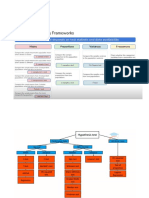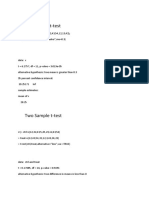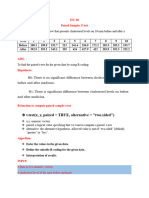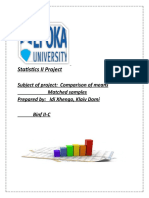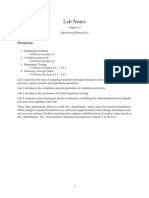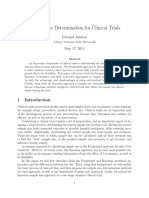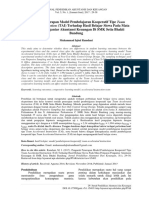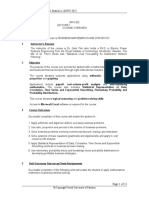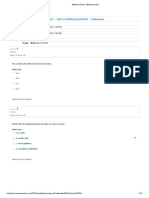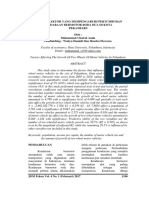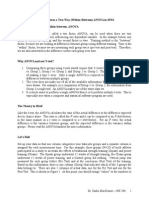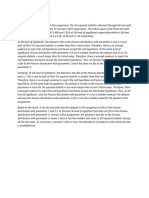0% found this document useful (0 votes)
72 views5 pagesHow To Perform T-Test in Pandas
The document discusses three types of t-tests that can be performed using pandas: independent two sample t-test, Welch's two sample t-test, and paired sample t-test. It provides examples of how to set up sample data in a pandas DataFrame and use functions from the SciPy library to conduct each t-test. The examples test whether two studying methods lead to different exam score means. The t-test output includes the test statistic and p-value, allowing a determination of whether the null hypothesis can be rejected.
Uploaded by
Garuma AbdisaCopyright
© © All Rights Reserved
We take content rights seriously. If you suspect this is your content, claim it here.
Available Formats
Download as DOCX, PDF, TXT or read online on Scribd
0% found this document useful (0 votes)
72 views5 pagesHow To Perform T-Test in Pandas
The document discusses three types of t-tests that can be performed using pandas: independent two sample t-test, Welch's two sample t-test, and paired sample t-test. It provides examples of how to set up sample data in a pandas DataFrame and use functions from the SciPy library to conduct each t-test. The examples test whether two studying methods lead to different exam score means. The t-test output includes the test statistic and p-value, allowing a determination of whether the null hypothesis can be rejected.
Uploaded by
Garuma AbdisaCopyright
© © All Rights Reserved
We take content rights seriously. If you suspect this is your content, claim it here.
Available Formats
Download as DOCX, PDF, TXT or read online on Scribd
/ 5




